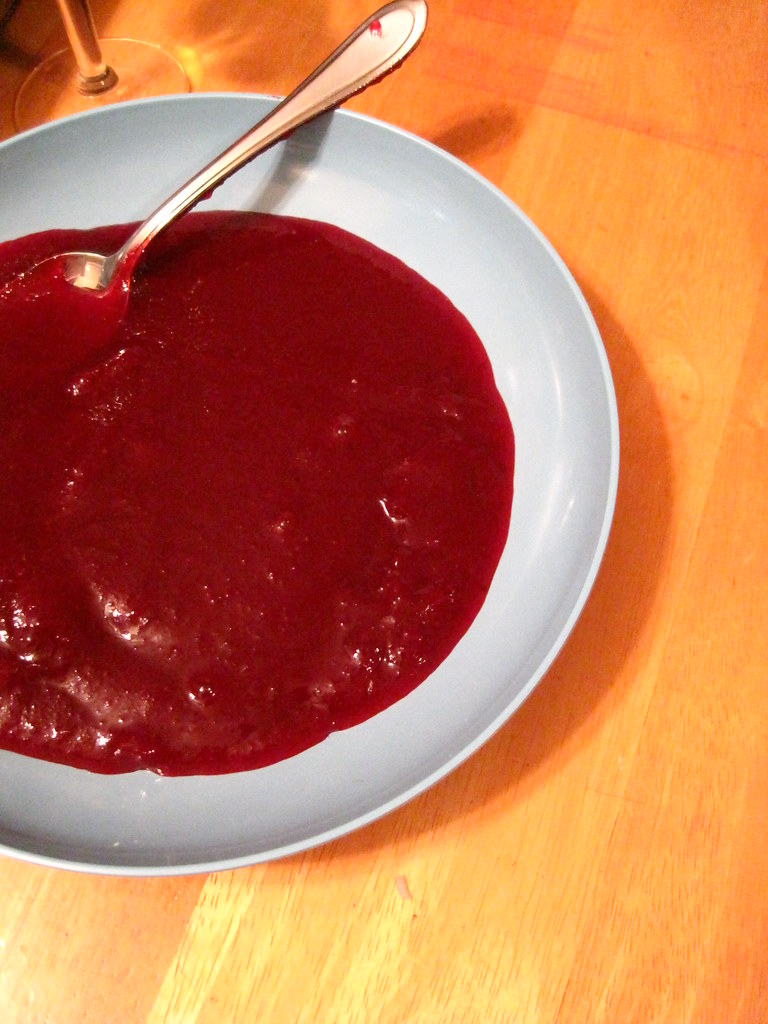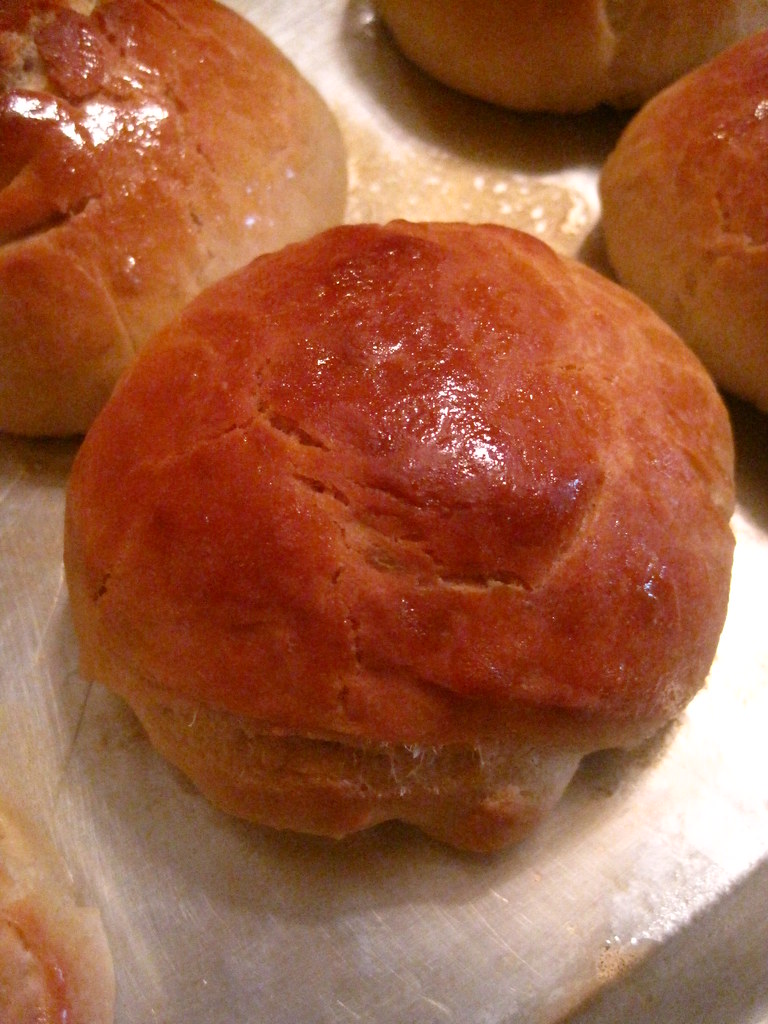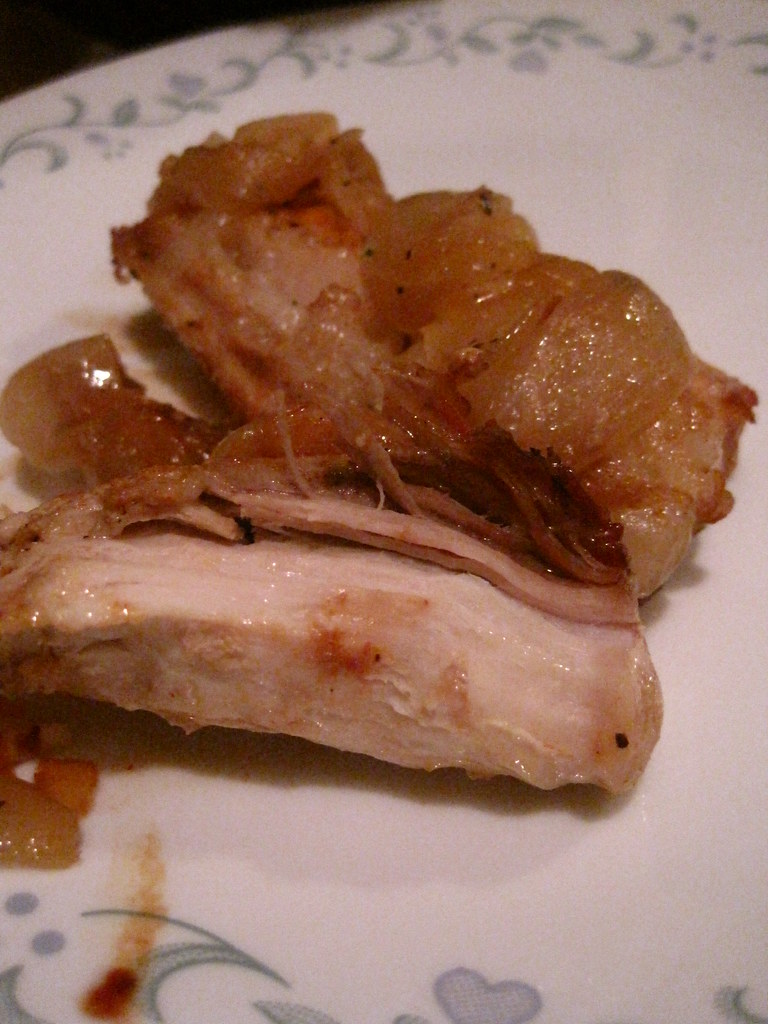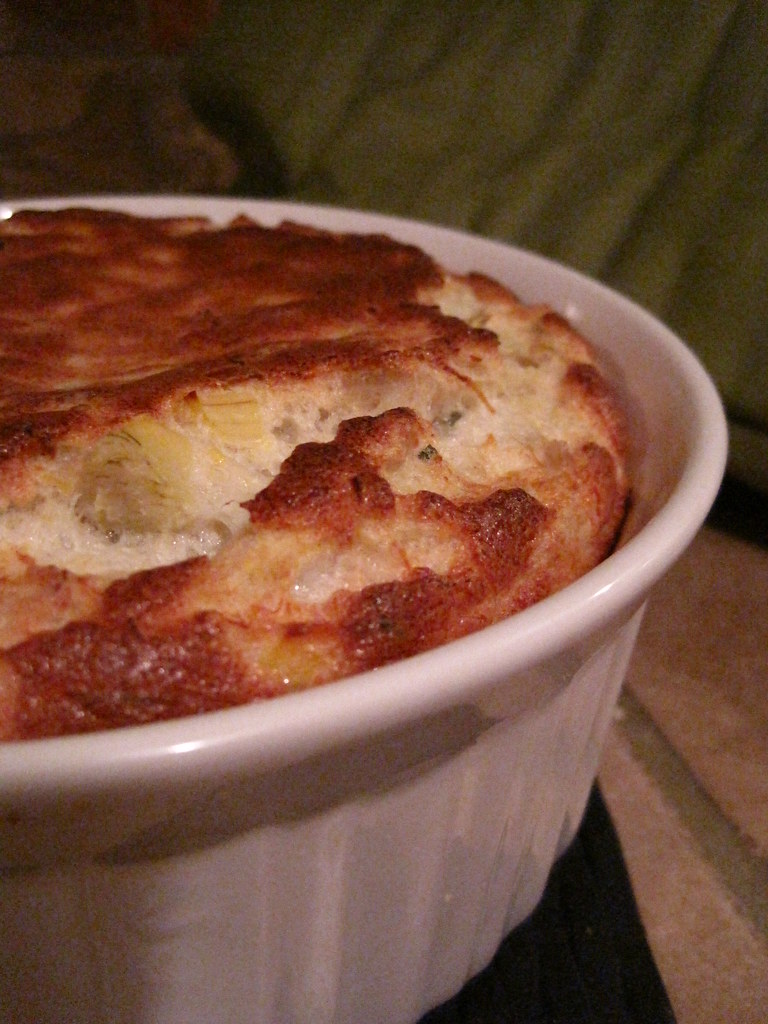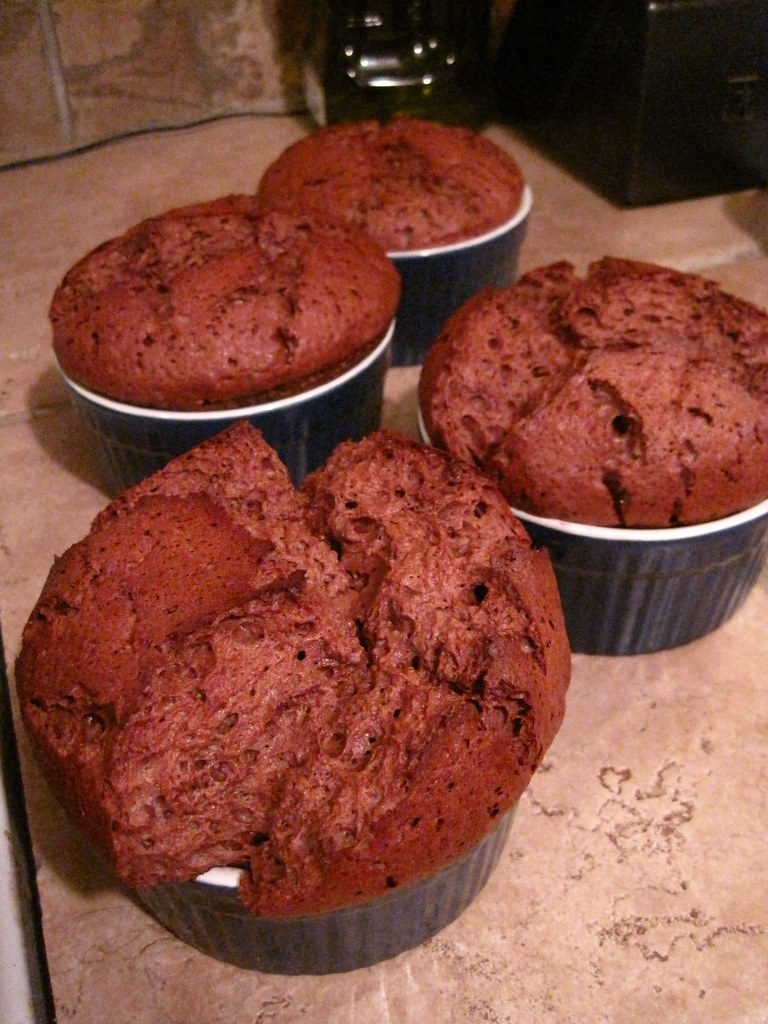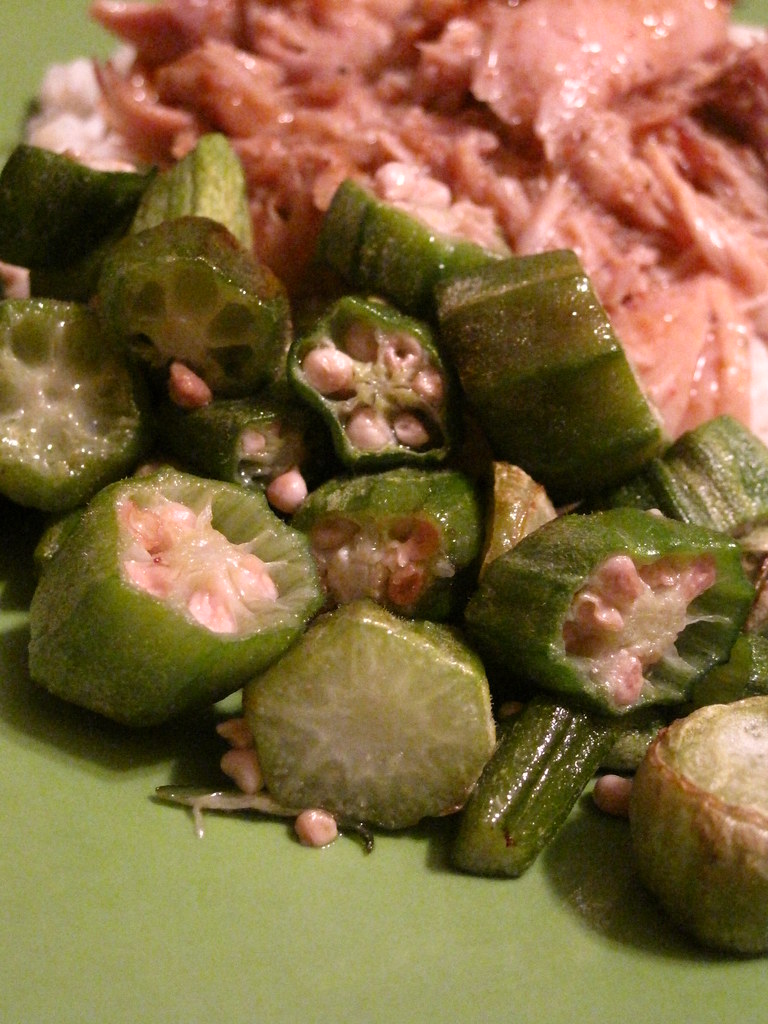The 2010 November Daring Bakers’ challenge was hosted by Simona of briciole. She chose to challenge Daring Bakers’ to make pasta frolla for a crostata. She used her own experience as a source, as well as information from Pellegrino Artusi’s Science in the Kitchen and the Art of Eating Well.
Guys, this might be my favorite challenge thus far. A crostata is sweet short crust pastry (reminiscent of a sugar cookie) that can be filled with fruit preserves, pastry cream, or other marvelous things. I decided to go with a simple pastry cream/custardy filling. Since hubby told me I could only make one pie for Thanksgiving (he's so mean!) I thwarted him by preparing this for Thanksgiving dessert as well. I did not have regular size tart pan (8 or 9 inches) but I did have a bunch of smaller ones, so I decided to make mini crostatas with end up being the perfect dessert size, in my opinion.
The reason I loved this challenge so much is because this crostata is nearly identical to my absolute favorite pastry at Croissant du Jour in Cedar Rapids, Iowa (where hubby and I lived while I was in college). The only thing missing was a handful of raspberries baked into the cream.
Crostata Con la Crema
Pastry
Whisk together sugar, flour and salt in a bowl.
Rub or cut the butter into the flour until the mixture has the consistency of coarse crumbs. You can do this in the bowl or on your work surface, using your fingertips or an implement of choice.
Make a well in the center of the mounded flour and butter mixture and pour the beaten eggs into it (reserve about a teaspoon of the egg mixture for glazing purposes later on – place in the refrigerator, covered, until ready to use).
Add the lemon zest to your flour/butter/egg mixture.
Use a fork to incorporate the liquid into the solid ingredients, and then use your fingertip. Knead lightly just until the dough comes together into a ball.
Shape the dough into a flat disk and wrap in plastic wrap. Place the dough in the refrigerator and chill for at least two hours. You can refrigerate the dough overnight.
For the Crema :
In a medium saucepan, heat the milk and extracts, but keep well below boiling.
In a large heatproof bowl, whisk yolks and sugar until pale yellow and frothy. Temper the yolks by whisking in 1/4 cup of the heated milk. Whisk in another 1/4 cup, then pour it all back into the saucepan.
Over medium heat, bring to a boil, stirring constantly. Cook until mixture has thickened considerably, and can coat the back of the spoon.
Fill the sink with a couple inches of cold/ice water. Place the saucepan in the water and let cool to room temperature, stirring occasionally.
Assembling and baking the crostata con la crema:
Heat the oven to 350ºF [180ºC/gas mark 4].
Take the pasta frolla out of the fridge, unwrap it and cut away ¼ of the dough. Reserve this dough to make the lattice top of the crostata. Refrigerate this dough while you work on the tart base.
To help roll the crostata dough, keep the dough on top of the plastic wrap that you had it wrapped in. This can help rolling the dough and can also help when transferring the dough to your pan. You can also use parchment paper for this. However, you can also roll the dough directly on a work surface if you prefer.
Lightly dust the top of the dough and your work surface (if you’re rolling directly on a work surface) with flour. Keep some flour handy to dust the dough as you go along.
If the dough is very firm, start by pressing the dough with the rolling pin from the middle to each end, moving the rolling pin by a pin's width each time; turn the dough 180 degrees and repeat; when it softens, start rolling.
Roll the dough into a circle about 1/8th inch (3 mm) thick.
If you used the plastic wrap or parchment paper as rolling surface, flip dough over the pan, centering it, and delicately press it all around so the corners are well covered. Peel away the plastic wrap.
Trim the excess dough hanging over the edges of the pan. Press the remaining dough around the border into the sides of the pan making sure the border is an even thickness all the way around.
Prick the bottom of the dough with a fork in several places.
Take out of the fridge the reserved pasta frolla you had cut away earlier. Roll it with your pin and cut into strips or use cookie cutters to make small shapes (this is not traditional, but it looks cute); or roll with your hands into ropes.
Cover the bottom of the crostata crust evenly with the pastry cream.
Use the prepared strips or rolls of dough to make a lattice over the surface, or decorate with the cut shapes. (Note: You can use dough scraps to make cookies: see the Additional Information section for some pointers)
Brush the border and strips of dough with the reserved beaten eggs. You can add a drop or two of water to the beaten eggs if you don’t have enough liquid.
Put the tart in the oven and bake for 30 minutes.
After 35 minutes, check the tart, and continue baking until the tart is of a nice golden hue.
When done, remove the tart from the oven and let cool. If you have used a tart pan with a removable bottom, then release the tart base from the fluted tart ring. Make sure the tart is completely cool before slicing and serving.
(I felt this tart was MUCH better after it had been refrigerated overnight)
Pastry
- 1/2 c. minus 1 tablespoon [105 ml, 100 g, 3 ½ oz] superfine sugar (see Note 1) or a scant 3/4 cup [180ml, 90g, 3 oz] of powdered sugar 1 and 3/4 cup [420 ml, 235 g, 8 1/4 oz.] unbleached all-purpose flour a pinch of salt
- 1 stick [8 tablespoons / 4 oz. / 115 g] cold unsalted butter, cut into small pieces
- grated0 zest of half a lemon (you could also use vanilla sugar as an option
- 1 large egg and 1 large egg yolk, lightly beaten in a small bowl
- 500 ml whole milk
- 1 tsp vanilla extract (optional)
- 1 tsp hazelnut extract (optional)
- 4 egg yolks
- ½ cup sugar
Whisk together sugar, flour and salt in a bowl.
Rub or cut the butter into the flour until the mixture has the consistency of coarse crumbs. You can do this in the bowl or on your work surface, using your fingertips or an implement of choice.
Make a well in the center of the mounded flour and butter mixture and pour the beaten eggs into it (reserve about a teaspoon of the egg mixture for glazing purposes later on – place in the refrigerator, covered, until ready to use).
Add the lemon zest to your flour/butter/egg mixture.
Use a fork to incorporate the liquid into the solid ingredients, and then use your fingertip. Knead lightly just until the dough comes together into a ball.
Shape the dough into a flat disk and wrap in plastic wrap. Place the dough in the refrigerator and chill for at least two hours. You can refrigerate the dough overnight.
For the Crema :
In a medium saucepan, heat the milk and extracts, but keep well below boiling.
In a large heatproof bowl, whisk yolks and sugar until pale yellow and frothy. Temper the yolks by whisking in 1/4 cup of the heated milk. Whisk in another 1/4 cup, then pour it all back into the saucepan.
Over medium heat, bring to a boil, stirring constantly. Cook until mixture has thickened considerably, and can coat the back of the spoon.
Fill the sink with a couple inches of cold/ice water. Place the saucepan in the water and let cool to room temperature, stirring occasionally.
Assembling and baking the crostata con la crema:
Heat the oven to 350ºF [180ºC/gas mark 4].
Take the pasta frolla out of the fridge, unwrap it and cut away ¼ of the dough. Reserve this dough to make the lattice top of the crostata. Refrigerate this dough while you work on the tart base.
To help roll the crostata dough, keep the dough on top of the plastic wrap that you had it wrapped in. This can help rolling the dough and can also help when transferring the dough to your pan. You can also use parchment paper for this. However, you can also roll the dough directly on a work surface if you prefer.
Lightly dust the top of the dough and your work surface (if you’re rolling directly on a work surface) with flour. Keep some flour handy to dust the dough as you go along.
If the dough is very firm, start by pressing the dough with the rolling pin from the middle to each end, moving the rolling pin by a pin's width each time; turn the dough 180 degrees and repeat; when it softens, start rolling.
Roll the dough into a circle about 1/8th inch (3 mm) thick.
If you used the plastic wrap or parchment paper as rolling surface, flip dough over the pan, centering it, and delicately press it all around so the corners are well covered. Peel away the plastic wrap.
Trim the excess dough hanging over the edges of the pan. Press the remaining dough around the border into the sides of the pan making sure the border is an even thickness all the way around.
Prick the bottom of the dough with a fork in several places.
Take out of the fridge the reserved pasta frolla you had cut away earlier. Roll it with your pin and cut into strips or use cookie cutters to make small shapes (this is not traditional, but it looks cute); or roll with your hands into ropes.
Cover the bottom of the crostata crust evenly with the pastry cream.
Use the prepared strips or rolls of dough to make a lattice over the surface, or decorate with the cut shapes. (Note: You can use dough scraps to make cookies: see the Additional Information section for some pointers)
Brush the border and strips of dough with the reserved beaten eggs. You can add a drop or two of water to the beaten eggs if you don’t have enough liquid.
Put the tart in the oven and bake for 30 minutes.
After 35 minutes, check the tart, and continue baking until the tart is of a nice golden hue.
When done, remove the tart from the oven and let cool. If you have used a tart pan with a removable bottom, then release the tart base from the fluted tart ring. Make sure the tart is completely cool before slicing and serving.
(I felt this tart was MUCH better after it had been refrigerated overnight)

